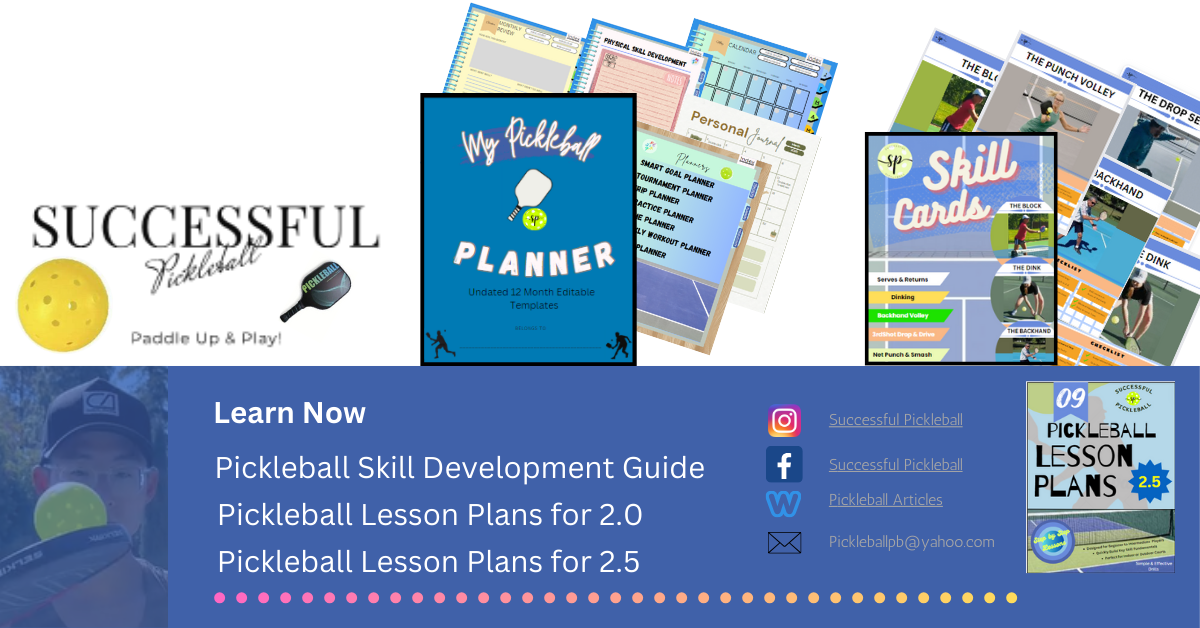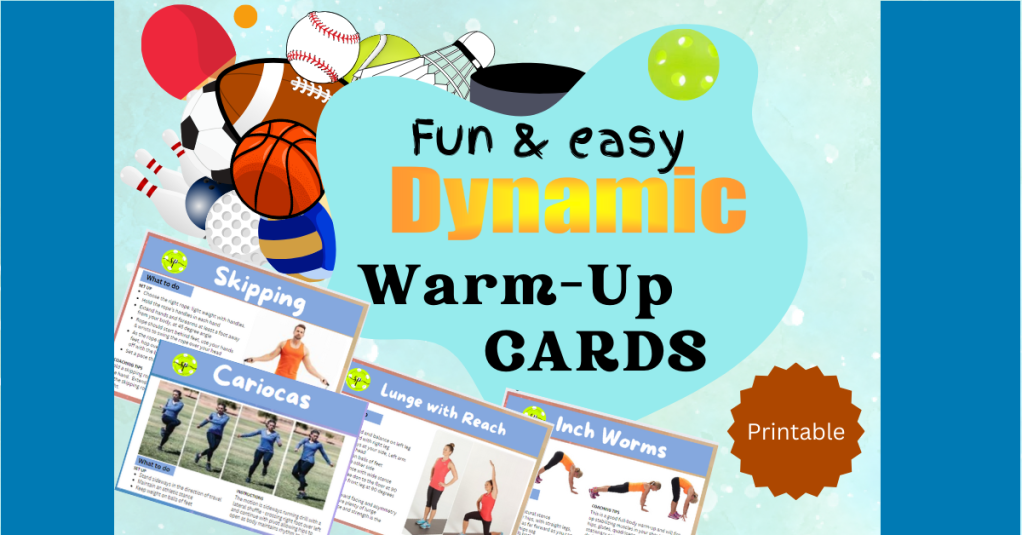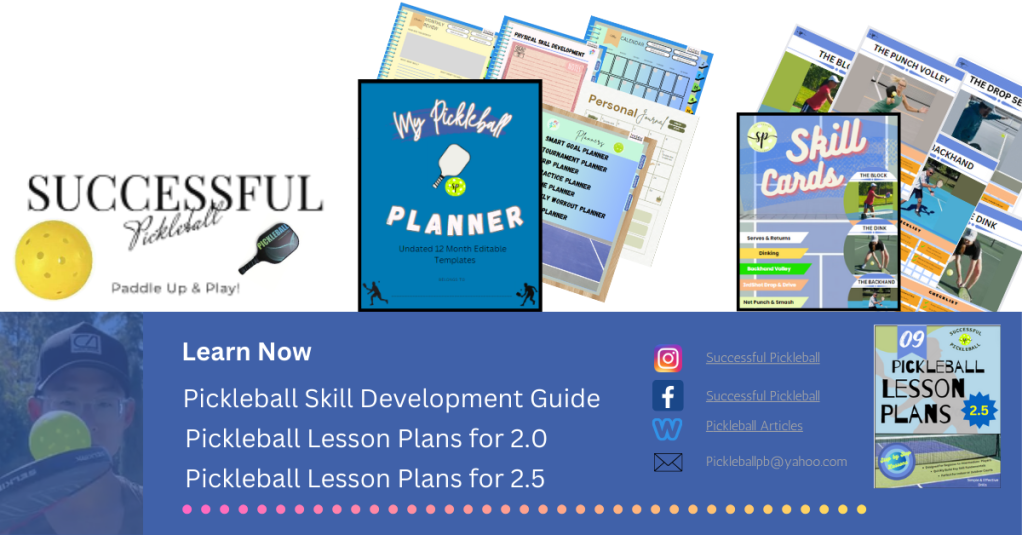Returning the serve is the backbone of your offense. Most coaches trust that the return of serve sets up the rest of the point in the game of pickleball. It is so important that all players learn to execute this skill with proficiency and accuracy. Proficiency is achieved by concentrating on the mechanical aspects while accuracy is the mark of every champion and achieved through the process of repetition.
Hit returns from both sides of the court with both forehand and backhand returns.
1. Targets
Place a hula hoop, an orange cone, or another target at the baseline. Have a partner serve the ball to you, or use a ball machine, return the ball alternating forehand and backhand groundstrokes into/at the targets.
The importance of having a target every time we hit the ball is paramount. During a game, the great thing is that before we serve we have plenty of time to choose our target (and to communicate this to our partner) but when the team is separated by positioning on the return of service, it can be harder to communicate. Hand signals are the best solution for communicating to your partner before the serve.
Be certain you take time to really focus on a spot you want to return the ball. In practice, the larger your target, the more likely you will hit it (or land in the immediate area). As your skill grows, make target areas smaller.

Targets I use when I practice are low profile cones with a pickleball on top and markers placed in an X. But you don’t have to purchase targets. You can simply stack a few pickleballs or tennis balls on the court. Some people place old washcloths or towels on the court. Some use chalk or green painter’s tape (if the courts permit). There are many low/no-cost solutions, so I challenge you to be creative
Move the targets as skill improves.
2. Pace
Handling and delivering pace is critically important when practicing your return of service. Have a partner serve (or throw) the ball to you, steer the ball left and right alternating distance and pace. Some players move along the baseline in hope the serve will lineup with their positioning – backhand or forehand. Ideally, you will want to be able to hit any position by simply adjusting your paddle angle and follow-through.
Focus on adjusting the angle of your paddle at the point of contact – undercut or slice will slow the ball down. Keep in mind, the difficulty adjusting the paddle face if your body positioning is not correct. A drive will need your full range of motion with complete extension and just the right height (about knee level).
If you need more help with dynamics and body mechanics for a return of service shot, consider grabbing my eBook: Pickleball Skill Development
3. Increase Reaction Time
To speed up your reaction time, have a partner serve you the ball hard while standing inside the baseline. Try it while shortening your backswing.

Working on your reflexes is a great way to increase your reaction time. Ball and agility drills work like magic. Place a few cones at a distance apart and run between them as fast as you can while bouncing a ball, or juggling a ball. Switch up the position of the cones or run in a different way to mix things up.
4. Practice Short Hops
SHORT HOPS: This is when the ball lands at your feet and at hand a quick reactive punch with your paddle to return the serve as necessary. Pro Pickleball coach, Deb Harrison states that sometimes your only shot would be to short hop the return of service.
5. Practice Different Strokes
SHADOWING YOUR STROKE: Use a sequence of serves from your partner and try different strokes to find one that works for you.
To create depth on your return of serves, visualize the ball staying on your paddle as long as you can. If you have difficulty, aim just a bit higher above the net. You will be surprised how much additional power and accuracy this visualization “trick” can have on your pickleball return of serve.
6. Ball Contact
A GENTLE PUSH: Improve your balance and accuracy by making contact with the ball in-front of your body without a backswing and gently push the serve back over the net.
PRO TIPS:
GOAL – to put the ball in play. If you fail to return the serve, the other team gets a point. Free points make the other team cheer!
- GET TO THE NET – It is much easier to win points from the net, standing at the NVZ line, than from anywhere else on the court.
- AVOID A SHORT RETURN: A short return allows you opponents to get to the net and may put you on the defensive with a dink or a power shot increasing the difficulty for you.
- HARD RETURNS: Returns that are hard and low will force more errors and will allow less time for you to get to the net.
- HIGH, DEEP RETURN: These returns will produce less errors for both you and your opponents but it will produce more time to get to the net, so it is a good shot particularly if you have trouble moving into the net for any reason.
How to Handle a Hard Return of Serve
Please consider subscribing to our blog for more great pickleball content and make sure to follow us on Facebook and read our latest newsletter for some exciting news for the Spring 2024. Grab your dynamic warm-up exercise eBook as well, happy training!

Subscribe to get access
Get 6 Return of Service Drills when you subscribe today.











































One response to “6 Ways To Perfect Your Pickleball RETURN OF SERVICE”
[…] Return of serves, evolving your pickleball game with various strategies like a high lob return to provide more time to join partner at the NVZ enabling a strong defensive […]
LikeLike